Life
Desi Updating
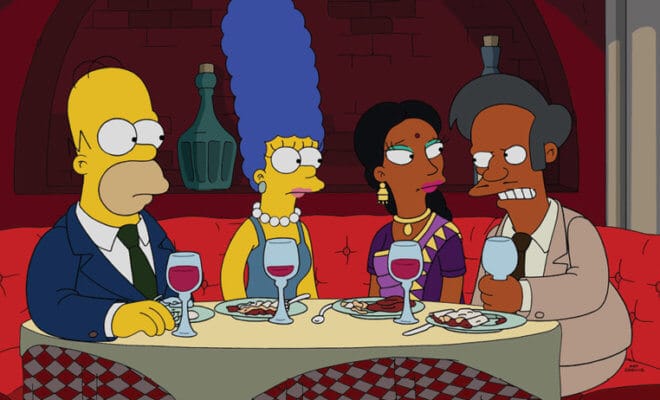
Why our love may not always be arranged.
When Brooklyn, New York, based Nazia Aibani began dating Steven DeFrank, an American of Sicilian origin, she knew that she was blazing a new path in her conservative family. However, when the couple decided to get married, it came almost as a cultural shock to her that her husband’s family was far less receptive to interracial marriage than her own parents.
She says, “Traditionally, the common perception about South Asians in the West has been that we go for strictly arranged marriages, marry within our community and perhaps have little or no say in the life partners our families choose for us.”
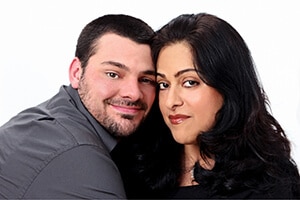
Nazia DeFrank with her husband Steven DeFrank
But the truth, she says, is that not just in the West but also back home in India, the desi dating scene is vibrant: “But somehow the perception of arranged marriages has stuck. Which is not to say that we do not have arranged marriages. In fact, in my own family we have had successful arranged marriages, but surely that is not the only way we marry and perhaps the West needs to know that.”
The concept of arranged marriages, practiced in many cultures, is a subject of intrigue, even disdain, for many Americans. In a society, bolstered by beliefs in individual freedom and free choice, most Americans are dismissive of the idea of somebody else suggesting a life partner for them. But increasingly in contemporary America, as large numbers of immigrants leave their imprints on all walks of life, from social to political, mainstream media is beginning to reflect aspects of immigrant social and love lives. It may be about time that Americans came to realize that South Asians too meet, date and mate much as their Western counterparts.
More interestingly, the report highlights that of all ethnicities, Latinos and Asians are most likely to marry outside their race or ethnicity. Asians have the highest proportion of interracial marriages (29 percent), followed by Hispanics (27 percent), Blacks (18 percent) and Whites (11 percent). And if you delve deeper, the statistics become even more telling, as the report found that the proportion of interracial marriages amongst Asians born in the United States is even higher at 46 percent.
Nikita Kamat, who is currently dating Andrew Mark, whom she met during a study trip in Boston says: “While we all may have our ‘The Big Sick,’ moments with families or relatives suggesting a possible match, the truth is that in most Indian families it is normal for children to choose whom they get married to. Also, another big myth, that needs to be busted is that when we are getting married to an American it is more for love and not really for that Green Card. Thank you!”
Popular culture is beginning to catch up. For years, the only jaded and somewhat lackluster reference of brown romance in series such as The Simpsons, today has some very real and believable counter parallels. In the show, Apu Nahasapeemapetilons’ mom suddenly announces his arranged marriage to Manjula, a girl he had not met in years, lending credence to yet another South Asian stereotype. Cut to 2018, and one sees a as-hot-as-it-gets Priyanka Chopra, playing Alex Parrish in Quantico Season 3, getting effortlessly engaged to fellow agent Ryan Booth.
Encouragingly, Chopra is not the only harbinger of bringing this reality to the silver screen. In New Girl on Fox Comedy, lead actress Cece Parikh marries Schmidt. In an interesting twist, the white groom is seen doing the drills, ranging from dancing to Bollywood numbers to calling the bride’s mom every week to impress her. Some other shows such as Homeland and Revenge in the recent years likewise showcased Indian American relationships without the clichés.
STEREOTYPES SET THE TONE
Many young South Asian Americans rue the stereotypes they have experienced on how they meet and date as a community. Devika Fernando, who grew up in Germany and married a Sri Lankan, says that most Westerners presumed that arranged marriages were the only way South Asians met and the perceptions ranged across a plethora of misinformed ideas: “In my experience, while some people thought it’s like what happens in Bollywood movies, where scheming parents try to separate star-crossed lovers, others thought that the marriages are loveless, still some others believed that young South Asians don’t have any say in their marriages while there were also people who held the notion that though we do get to meet our prospective, we have to do whatever our parents tell us.”
Fernando, who lives and manages a hotel in Sri Lanka, says: “I came to Sri Lanka from Germany in 2006 and met my husband at a hotel. It was a totally love match and perhaps nothing that a Western imagination of a South Asian wedding may be.”
But she understands why Westerners fall for the stereotype: “People in the West know a bit about the existence of caste system, religion and traditions. Not all foreigners have close Indian friends and most really haven’t been to India to learn and know about the practices. So, very often, the knowledge that they have is very superficial, leading to such assumptions.”
Nazia DeFrank found herself hit by a volley of assumptions by her in-laws soon after her marriage: “It’s sad that not many Westerners really believe that Indian girls can be very smart and secure. I believe I was everything for my in-laws that they could not imagine in an Indian girl.”
She explains: “The misconceptions are not just limited to that we do not get to choose our partners, but this mindset spills over to other arenas as well. For instance, my in-laws were shocked that I had very informed opinions on everything from American politics to public or social life.”
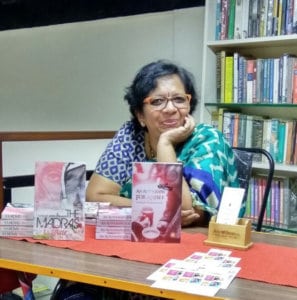
Author Sundari Venkatraman, who wrote ‘The Malhotra Bride,’
Even though Indian Americans are among the most affluent and educated immigrant community in the world, they cannot shake off the label of being conservative or even submissive to traditions. Author Sundari Venkatraman, who wrote ‘The Malhotra Bride,’ which dealt with the concept of arranged marriage in an Indian setting, explains: “Funnily in India, I would say the arranged marriages became much more progressive and even less common in urban areas than those amongst expats settled abroad.”
She adds: “It has been observed that Indians abroad tend to cling more to their cultural and community markers, perhaps in a bid to hold on to their roots. So, for a long time, Indian families settled abroad, even though were raising more and more American kids, were still trying to hold back to some very drastic traditional rules, such as marrying within their community…. Also, the fact that NRIs often came down to their native country to look for a suitable match also sets the tone for many Westerners to believe that all marriages amongst Indians are arranged marriages.”
While love marriages within the community have long become commonplace, growing numbers of Indian parents are also accommodating interracial marriages, blurring the lines of cultural constrictions even more.
Washington-based South Asian wedding planner Preeti Vasudeva, who has wed Punjabi and African American, Gujarati and Guyanese, Gujarati and African American, Punjabi and Puerto Rican, Argentinian and Bengali and countless other combinations, vouches that most of these marriages were based on love, never mind the differences, and the parents as well as the relatives seemed perfectly in tune with their children’s choices.
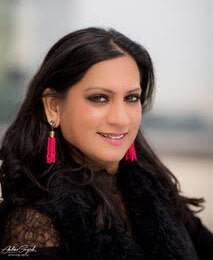
Wedding planner Preeti Vasudeva has wed many intercultural Indian couples.
She says, “The reservations are far less now. And there are many factors that have changed for our generation. We have more opportunities, some desis are not as culturally inept about language and holidays. Some are raised as American as possible without a lot of (Indian) culture or chose not to participate in the culture. This is opening up the rise of interracial marriages. On the other hand, some are still very true to their culture and family values, but fall in love with someone who is not desi.”
ARRANGED MARRIAGE VERSION 2.2
Marriage counselors and planners for South Asian marriages caution though that despite growing number of love marriages, arranged marriages still dominate and will continue to do so. However, the structure of an arranged marriage has undergone an overhaul. Ayesha Hakki, publisher of Bibi magazine, one of the oldest South Asian wedding platforms in the United States, believes that we need a new nomenclature for arranged marriages: “Arranged marriages themselves have morphed more into an introduction rather than as a commitment to marriage. The term is now ‘assisted,’ marriages, which is really no different than employing a matchmaker or using an online dating service, such as eHarmony, for example. Parents and the larger community are making introductions so that people looking to get married can, perhaps, meet someone who would be a good match.”
Many relationship experts also feel that it may be time to normalize this entire concept of arranged marriages. Given their busy schedules people often can’t meet someone they click with on their own. Asking family, friends or even relatives to introduce them to someone they might like is hardly something strange.
Ishdeep Sawhney, who is based in the Bay Area, has conceptualized, Banihal, an online matrimonial website that promises to find the perfect match for users based on neuroscience principles. He says that artificial intelligence can be used to find matches and terms these types of arranged marriages as version 2.2: “The matchmaking website caters to the aspirations of those for whom traditional ways of finding a life partner don’t work. It has made neuroscience research and advanced search technology the centerpiece of its matchmaking service with the aim to deliver objective and accurate results.”

In New Girl on Fox, lead actress Cece Parikh marries Schmidt. who is seen doing the drills, ranging from dancing to Bollywood numbers to calling the bride’s mom every week to impress her.
While arranged marriages may be transforming, the archetypal impressions continue to color the Western imagination. Ishdeep Sawhney says: “There still are certain cultural markers that are apparent. For instance, casual dating in still not very commonplace amongst South Asians in the West. Many Westerners may mistake it for a conservative approach and a precursor to an arranged marriage, which is actually not true.”
Ayesha Hakki points out another difference in the desi dating: “The biggest problem, which I think exists today, is that non-South Asian folks take ‘meeting the parents’ as a much more casual encounter than South Asians do. Non-South Asians don’t understand that meeting the parents is still considered a precursor to engagement. Hence, non-South Asians get upset when they are not included in family conversations or gatherings, not realizing the implications such a meeting holds. It’s changing, but we still have at least a decade or so more to go before the encounter loses its significance and becomes more casual.”
But, even so, there is nothing that can stop South Asians from loving and dating in ways they know best.

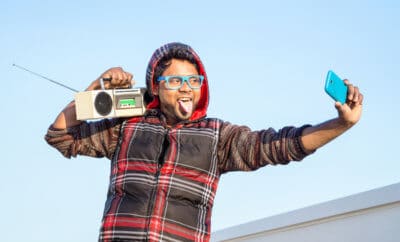

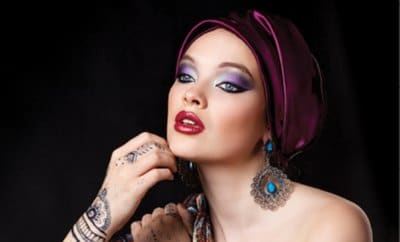
You must be logged in to post a comment Login